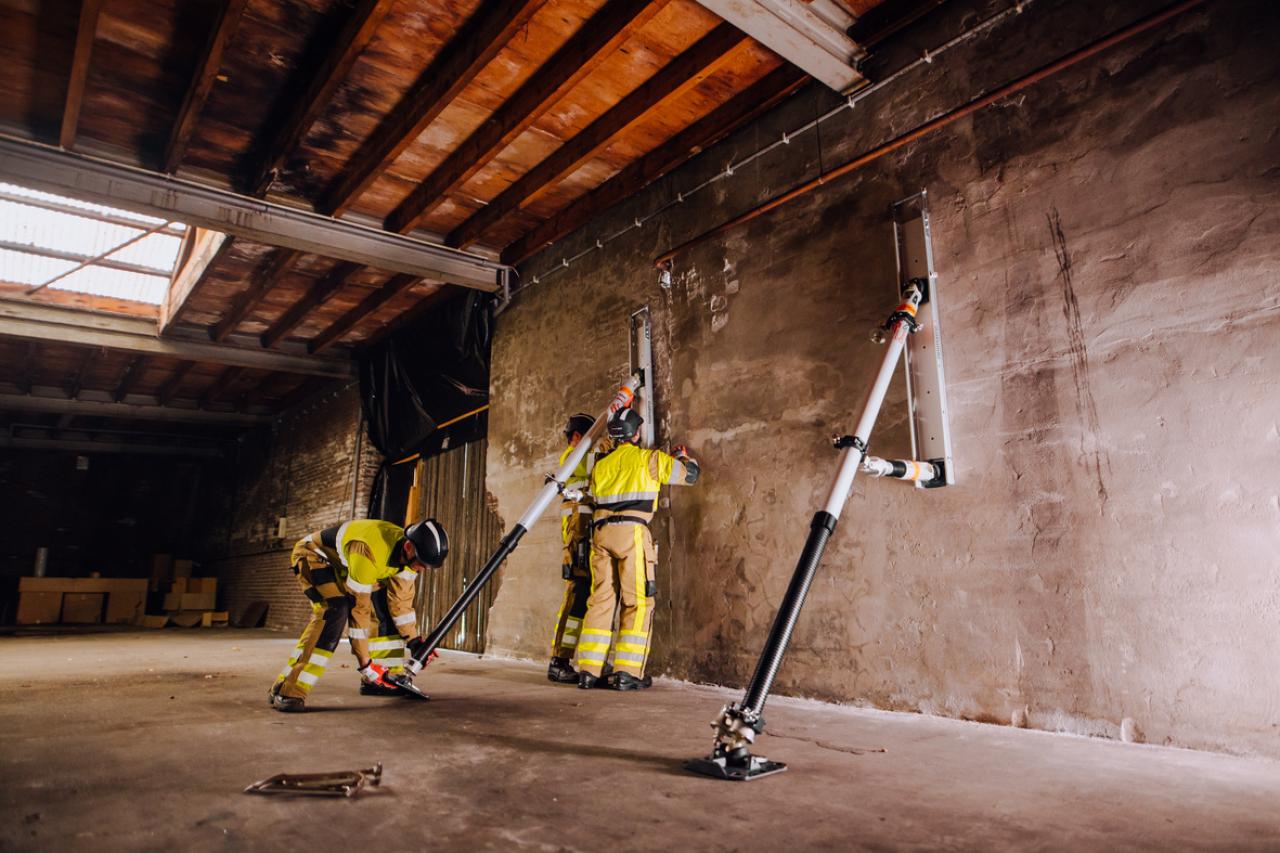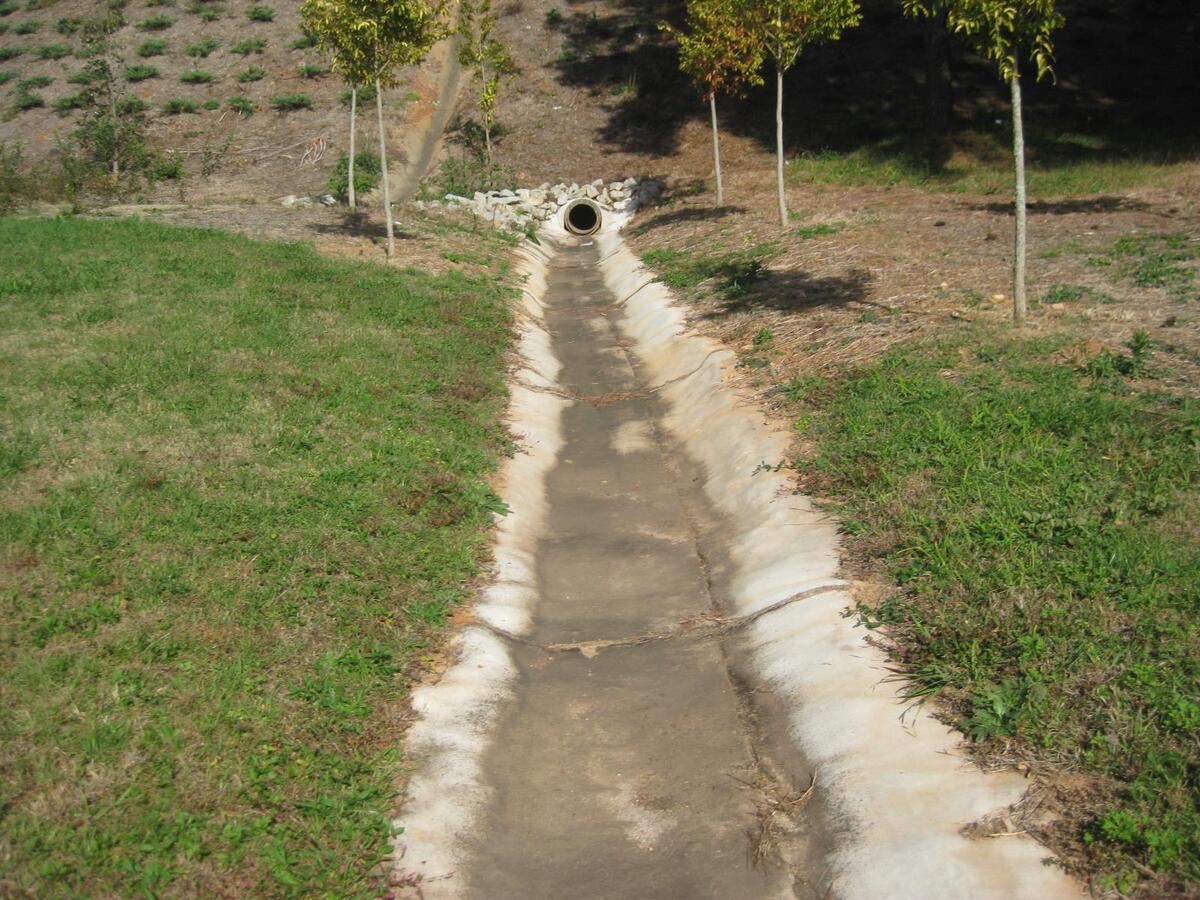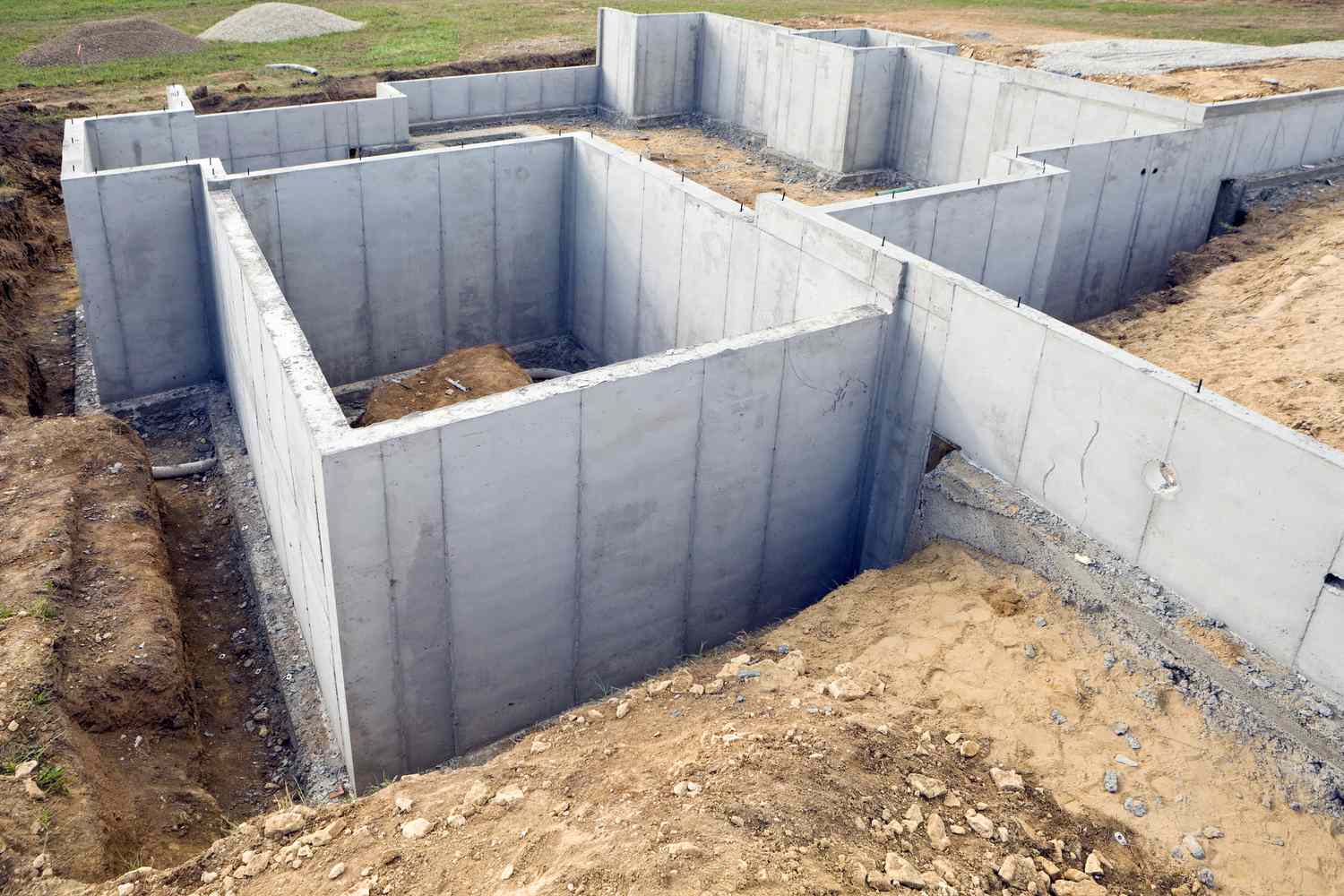Home>diy>Building & Construction>What Are CD’s In Construction


Building & Construction
What Are CD’s In Construction
Modified: August 27, 2024
Learn how Construction Design Statements (CDS) play a crucial role in building construction. Find out how they guide a project's design, aesthetics, and compliance.
(Many of the links in this article redirect to a specific reviewed product. Your purchase of these products through affiliate links helps to generate commission for Storables.com, at no extra cost. Learn more)
Introduction
Construction projects are complex undertakings that require meticulous planning, precise execution, and effective management. In recent years, the construction industry has witnessed a significant shift towards integrating technology into various aspects of project management. One such technological advancement that is revolutionizing the industry is Construction Data and Analytics Systems, commonly known as CDS. CDS refers to the use of technology and data-driven solutions to optimize construction processes, enhance efficiency, and minimize risks in construction projects. It encompasses a wide range of tools, software, and platforms that enable seamless communication, collaboration, and analysis of project data from design to completion. From generating accurate cost estimates and scheduling timelines to monitoring project progress and ensuring quality control, CDS plays a crucial role in streamlining construction workflows and driving project success. In this article, we will delve deeper into the world of CDS in construction, exploring its definition, importance, common types, benefits, challenges, and future trends. By understanding the significance of CDS and its potential impact on construction projects, industry professionals can stay ahead of the curve and leverage these innovative solutions to achieve greater operational efficiency and project outcomes.
Key Takeaways:
- Construction Data and Analytics Systems (CDS) revolutionize project management by enhancing collaboration, streamlining workflows, and enabling data-driven decision-making, ultimately leading to more efficient and successful construction projects.
- Emerging technologies such as AI, IoT, AR/VR, and blockchain are shaping the future of CDS in construction, offering opportunities to optimize project management processes, drive sustainability, and innovate the industry.
Read more: How To Store Cds Long-Term
Definition of CDS in Construction
Construction Data and Analytics Systems (CDS) refer to the integration of technology and data-driven solutions in the construction industry to optimize project management processes. CDS encompasses a wide range of tools, software, and platforms that enable the collection, analysis, and visualization of data related to construction projects. At its core, CDS aims to centralize project data, streamline communication, and facilitate collaboration among project stakeholders, including architects, engineers, contractors, and subcontractors. By leveraging technology, CDS provides a comprehensive view of a construction project, from initial design and planning stages to construction and facility management. CDS platforms often utilize cloud-based solutions, enabling real-time access to project information and fostering seamless collaboration regardless of the physical location of team members. These systems offer a holistic approach to project management, encompassing aspects such as cost estimation, budget tracking, scheduling, progress monitoring, quality control, and risk management. The data collected and analyzed through CDS provide valuable insights into key project metrics, including labor productivity, material usage, equipment efficiency, and overall project performance. With this information at their fingertips, project teams can make informed decisions, identify areas for improvement, and anticipate and mitigate risks before they escalate. In addition to data management and analysis, CDS also facilitate document management and automation of repetitive tasks. Construction project documentation, such as drawings, specifications, and contracts, can be stored and accessed digitally within the system, eliminating the need for manual paperwork and reducing the risk of miscommunication and errors. Overall, CDS in construction is a comprehensive approach that leverages technology to optimize project management processes, enhance collaboration among stakeholders, and improve project outcomes. By centralizing data and providing real-time insights, CDS enables construction professionals to make data-driven decisions, streamline workflows, and improve efficiency and productivity across all stages of a construction project.
Importance of CDS in Construction Projects
Construction Data and Analytics Systems (CDS) have become increasingly important in the construction industry due to their ability to enhance project management processes and improve overall project outcomes. Here are some key reasons why CDS is crucial in construction projects: 1. Improved Decision-Making: CDS provides construction professionals with access to real-time, accurate data about project progress, costs, and resources. This enables informed decision-making at every stage of the project, helping to mitigate risks, optimize schedules, and prioritize resources effectively. 2. Enhanced Collaboration: CDS platforms facilitate seamless collaboration and communication among project stakeholders. Through cloud-based solutions, team members can access project information, share updates, and collaborate on tasks from anywhere, promoting better coordination and reducing delays caused by miscommunication. 3. Increased Efficiency and Productivity: By streamlining workflows and automating repetitive tasks, CDS significantly improves overall efficiency and productivity. Construction professionals can track resource usage, monitor construction schedules, and identify bottlenecks or inefficiencies promptly, allowing for timely adjustments and optimization of project timelines. 4. Cost Control and Budget Management: CDS platforms enable accurate cost estimation, budget tracking, and financial management throughout the project lifecycle. Construction professionals can monitor expenses, track variations, and identify cost-saving opportunities, ultimately ensuring that projects stay within budget. 5. Improved Quality Control and Risk Management: CDS facilitates better quality control by providing real-time access to project data and enabling transparent communication among stakeholders. Any gaps or issues can be identified and addressed promptly, ensuring that the project meets the desired quality standards. Additionally, data-driven insights from CDS help to identify and mitigate potential risks, enhancing overall project safety and minimizing costly errors. 6. Efficient Resource Allocation: CDS enables construction professionals to optimize resource allocation, such as labor, materials, and equipment. By analyzing project data, professionals can identify resource demands, allocate resources effectively, and prevent underutilization or overexertion of resources. 7. Documentation Management: CDS platforms provide a centralized repository for project documentation, eliminating the need for physical paperwork and reducing the risk of misplacing important documents. This ensures easy access to vital project information and enhances document control and version management. 8. Improved Stakeholder Communication: CDS platforms facilitate seamless communication among project stakeholders, including owners, architects, engineers, contractors, and subcontractors. This promotes transparency, establishes clear channels for communication, and minimizes misunderstandings or delays caused by miscommunication. By embracing CDS in construction projects, professionals can leverage technology, data, and analytics to optimize project management processes, enhance collaboration, improve efficiency, and achieve better project outcomes. Ultimately, CDS empowers construction professionals with the tools and insights necessary to successfully navigate the complexities of construction projects and deliver results that meet or exceed expectations.
Common Types of CDS Used in Construction
Construction Data and Analytics Systems (CDS) encompass a variety of tools and technologies that cater to different aspects of project management in the construction industry. Here are some common types of CDS used in construction: 1. Building Information Modeling (BIM): BIM is a 3D modeling technology that enables the creation of a digital representation of a construction project. BIM allows for the integration of various project data, including design, construction, and facility management information. It facilitates collaboration, clash detection, and visualization of the project, helping to streamline the design and construction processes. 2. Project Management Software: Project management software provides a centralized platform for organizing and managing construction projects. These tools include features such as task scheduling, document management, budget tracking, and communication tools. They enable efficient project planning, collaboration, and coordination among project stakeholders. 3. Construction Estimating Software: Construction estimating software helps construction professionals accurately estimate project costs by considering various factors such as materials, labor, equipment, and overhead expenses. These tools automate the process of creating cost estimates, enabling more accurate budgeting and cost control throughout the project lifecycle. 4. Scheduling and Planning Tools: Scheduling and planning tools aid in creating project timelines, allocating resources, and tracking progress. These tools allow construction teams to visualize the project schedule, identify critical paths, and monitor dependencies, ensuring efficient project execution and timely completion. 5. Mobile Applications: Mobile applications designed for construction enable field staff to access project information, report progress, and communicate with the project team in real-time. These applications help streamline communication, capture data on-site, and provide instant access to project documentation, reducing delays and ensuring effective collaboration. 6. IoT and Sensor Technology: Internet of Things (IoT) and sensor technology play a crucial role in collecting data from various sources in construction projects. IoT devices and sensors can be used to monitor factors such as temperature, moisture, vibration, and energy consumption, providing valuable insights for project optimization and maintenance. 7. Drone Technology: Drones have become increasingly popular in the construction industry for various applications. They are used for surveying, monitoring site progress, inspecting hard-to-reach areas, and capturing aerial imagery. Drones provide accurate and real-time data for better decision-making and improved project efficiency. 8. Augmented Reality (AR) and Virtual Reality (VR): AR and VR technologies enable construction professionals to visualize projects in 3D, allowing for a better understanding of the design and construction process. AR and VR can be used for virtual walkthroughs, clash detection, and simulation exercises, improving collaboration and reducing errors during construction. It’s important to note that the implementation of CDS may vary depending on the size, complexity, and specific requirements of a construction project. The selection of the appropriate CDS tools and technologies should be based on the project’s objectives, budget, and the needs of the project team. By leveraging these common types of CDS in construction, professionals can enhance project efficiency, collaboration, and decision-making, leading to better project outcomes and client satisfaction.
Benefits and Advantages of CDS in Construction
Construction Data and Analytics Systems (CDS) offer numerous benefits and advantages to the construction industry, improving project management processes and driving better project outcomes. Here are some key benefits of implementing CDS in construction: 1. Enhanced Efficiency: CDS streamlines workflows, automates repetitive tasks, and improves overall project efficiency. Construction professionals can track project progress, monitor resource utilization, and identify bottlenecks or inefficiencies, allowing for timely adjustments and optimization of project timelines. 2. Improved Collaboration: CDS platforms facilitate seamless communication and collaboration among project stakeholders. Real-time access to project data, cloud-based solutions, and mobile applications enable teams to work together more efficiently, reducing delays caused by miscommunication and improving overall project coordination. 3. Accurate Cost Estimation: CDS tools, such as construction estimating software, provide accurate cost estimation by considering various project factors. This enables construction professionals to develop more accurate budgets, monitor project costs, and make informed decisions regarding resource allocation and procurement. 4. Effective Risk Management: CDS platforms provide real-time insights into project data, allowing for proactive risk management. Construction professionals can identify potential risks, track safety compliance, and implement risk mitigation strategies promptly, reducing the likelihood of accidents, delays, and cost overruns. 5. Improved Decision-Making: CDS enables data-driven decision-making throughout the project lifecycle. Accurate and timely information about project costs, schedules, and resource utilization allows project teams to make informed decisions, prioritize tasks, and optimize project performance. 6. Enhanced Quality Control: CDS platforms enable better quality control by providing real-time access to project data and facilitating transparent communication among stakeholders. Construction professionals can monitor project quality, identify deviations from the desired standards, and implement corrective actions promptly, ensuring the project meets or exceeds client expectations. 7. Efficient Document Management: CDS eliminates the need for physical paperwork by providing a centralized repository for project documentation. This streamlines document management processes, improving document control and version management while reducing the risk of misplacing or miscommunicating important project information. 8. Increased Client Satisfaction: By leveraging CDS, construction professionals can optimize project management processes, improve project outcomes, and enhance client satisfaction. Timely project delivery, adherence to budget, and high-quality outcomes contribute to positive client experiences and foster long-term relationships. 9. Sustainability and Environmental Benefits: CDS tools can help construction professionals track energy consumption, materials wastage, and overall project sustainability metrics. This allows for more efficient resource utilization, reduced environmental impact, and compliance with sustainability standards. 10. Competitive Advantage: Implementing CDS in construction projects provides a competitive advantage in the industry. By leveraging technology, data analytics, and efficient project management processes, construction companies can differentiate themselves, attract more clients, and win more projects. It is important to note that the benefits of CDS may vary depending on the specific tools and technologies used and the unique requirements of each construction project. However, overall, the effective implementation of CDS in construction can lead to improved efficiency, collaboration, decision-making, and project outcomes.
When working in construction, it’s important to understand that CDS (Construction Design and Management) regulations are in place to ensure the health and safety of all workers on site. Familiarize yourself with these regulations to ensure compliance and a safe working environment.
Read more: How To Store Cds Without Cases
Key Considerations for Implementing CDS in Construction Projects
Implementing Construction Data and Analytics Systems (CDS) in construction projects requires careful planning and consideration of various factors. Here are some key considerations to keep in mind when incorporating CDS into construction projects: 1. Define Project Objectives: Clearly define the goals and objectives of the project and determine how CDS can help achieve them. Identify specific areas where CDS can add value, such as cost estimation, scheduling, risk management, or collaboration, and align the implementation with the project objectives. 2. Assess Project Requirements: Evaluate the specific requirements of the project, including its size, complexity, and the scope of work. Consider whether the project would benefit from advanced technologies like Building Information Modeling (BIM), virtual reality (VR), or drone technology, or if a simpler project management software would suffice. 3. Select the Right Tools and Technologies: Choose CDS tools and technologies that align with the project requirements and objectives. Research different options, evaluate their features and capabilities, and select tools that can effectively address the specific challenges of the project while providing the desired functionalities. 4. Standardize Workflows and Processes: Before implementing CDS, establish standardized workflows and processes that will be followed by the project team. Clearly define roles and responsibilities, communication protocols, and data collection procedures to ensure consistency and maximize the benefits of CDS implementation. 5. Ensure Data Accuracy and Integration: Consider the sources of data that will be fed into the CDS platform and ensure their accuracy and reliability. Implement data integration processes to enable seamless data exchange between different software applications and systems used in the project. 6. Provide Adequate Training and Support: Proper training and support are essential for successful CDS implementation. Ensure that the project team receives comprehensive training on using the selected CDS tools and technologies. Provide ongoing support to address any technical issues or challenges that may arise during the project. 7. Promote Collaboration and Communication: Emphasize the importance of collaboration and communication among project stakeholders. Encourage the use of CDS tools and platforms as a means to facilitate efficient communication, real-time data sharing, and seamless collaboration between team members. 8. Address Security and Data Privacy: Consider the security and data privacy aspects of implementing CDS. Ensure that the selected tools and platforms adhere to industry-recognized security standards and data privacy regulations. Implement appropriate access controls and data protection measures to safeguard sensitive project information. 9. Foster Change Management: Implementing CDS may require a change in existing workflows and processes. Foster a culture of change by involving the project team in the decision-making process, providing clear communication about the benefits of CDS, and addressing any concerns or resistance that may arise. 10. Evaluate and Continuously Improve: Regularly assess the effectiveness of the implemented CDS tools and technologies. Gather feedback from the project team and stakeholders to identify areas for improvement and make adjustments as necessary. Continuously monitor the impact of CDS on project performance and incorporate lessons learned into future projects. By considering these key factors, construction professionals can effectively implement CDS in their projects and leverage technology and data-driven solutions to optimize project management processes and improve overall project outcomes.
Challenges and Limitations of CDS in Construction
While Construction Data and Analytics Systems (CDS) offer significant benefits and advantages to the construction industry, they also come with certain challenges and limitations. It is important to be aware of these potential issues when implementing CDS in construction projects. Here are some common challenges and limitations: 1. Data Collection and Integration: Collecting and integrating data from various sources can be a challenge in construction projects. Different software applications and systems may generate data in different formats, making it difficult to seamlessly integrate the data for comprehensive analysis. It requires careful planning and coordination to ensure that the necessary data is collected, standardized, and integrated into the CDS platform. 2. Data Quality and Accuracy: Ensuring the quality and accuracy of data is crucial for making effective use of CDS. Inaccurate or incomplete data can lead to erroneous analysis and decision-making. Construction professionals must establish data quality control processes and implement measures to verify the accuracy and reliability of the data captured within the CDS platform. 3. Complexity and Learning Curve: Implementing CDS often involves adopting new technologies and workflows, which can be complex and require a learning curve for the project team. Some team members may have limited experience or resistance to change, which can hinder the successful adoption and utilization of CDS tools. Adequate training and support are essential to overcome this challenge. 4. Cost and Budget Constraints: Implementing CDS in construction projects often comes with a cost. Depending on the size and complexity of the project, the cost of acquiring and implementing CDS tools and technologies can be significant. Small or budget-constrained projects may face limitations in terms of the extent of CDS implementation, impacting the full potential benefits that could be achieved. 5. Technical Compatibility and Integration: CDS tools and technologies need to integrate seamlessly with existing software systems and platforms used in construction projects. Compatibility issues may arise if the CDS solution is not designed to work with specific software, hardware, or IT infrastructure. It is crucial to consider technical compatibility and integration requirements during the selection and implementation of CDS. 6. Limited Industry Standardization: The construction industry lacks unified standards and protocols for data exchange and collaboration, which can pose challenges in implementing CDS across projects. Inconsistencies in data formats, naming conventions, and information sharing processes may require additional effort and customization to align with the specific project requirements. 7. Dependence on Connectivity and Infrastructure: CDS typically relies on internet connectivity and robust IT infrastructure to function effectively. Construction projects often take place in remote or challenging environments where connectivity may be limited or intermittent. This can hinder real-time data sharing and collaboration, impacting the smooth operation of CDS platforms. 8. Security and Data Privacy Concerns: CDS platforms involve the storage and sharing of sensitive project data and intellectual property. Ensuring robust security measures and data privacy protection is crucial to mitigate the risk of unauthorized access, data breaches, or misuse of project information. Implementing strong security measures and adhering to industry best practices are essential in addressing these concerns. 9. Human Error and Adoption Hurdles: Despite advanced technology, human error can still occur when using CDS tools. Incorrect data entry, misinterpretation of analysis, or human bias can impact the accuracy and reliability of CDS outcomes. Additionally, resistance to change and lack of user adoption can limit the full potential of CDS implementation, requiring proper change management strategies. 10. Scalability and Project-Specific Adaptation: CDS implementation needs to consider the scalability of the solution. Tools and technologies may need to be adaptable to suit the unique requirements of different construction projects. Implementing scalable CDS solutions that can cater to projects of varying sizes and complexities can be a challenge. By understanding and addressing these challenges and limitations, construction professionals can leverage CDS effectively and optimize its benefits while working towards successful project delivery.
Case Studies: Successful Implementation of CDS in Construction Projects
The successful implementation of Construction Data and Analytics Systems (CDS) has been demonstrated in various construction projects worldwide. Here are two notable case studies showcasing the positive impact of CDS on project management processes and outcomes: Case Study 1: The Shard, London The Shard, located in London, is one of the tallest and most iconic skyscrapers in the city. During its construction, CDS played a crucial role in streamlining project management and achieving successful outcomes. BIM technology was extensively used to create a comprehensive digital model of the building, enabling effective collaboration among stakeholders. Using BIM, the project team was able to detect and resolve clashes in the design phase, resulting in substantial time and cost savings. The CDS platform facilitated communication and coordination between architects, engineers, and contractors, ensuring smooth construction processes and minimizing errors. Real-time data analysis and visualization through the CDS platform allowed project managers to make informed decisions, track progress, and optimize resource allocation. The successful implementation of CDS in The Shard project led to efficient project delivery, cost savings, and enhanced overall project quality. It demonstrated how CDS, particularly BIM, can improve collaboration, streamline workflows, and contribute to the successful delivery of complex construction projects. Case Study 2: Crossrail, UK Crossrail is one of the largest and most ambitious infrastructure projects in Europe, involving the construction of a new railway line across London. CDS played a pivotal role in managing this complex project, which required extensive coordination among multiple contractors, teams, and stakeholders. Crossrail implemented an integrated CDS platform that allowed real-time monitoring and management of project data. The platform provided a centralized repository for project information, including design drawings, project schedules, and cost estimates. This facilitated effective communication, collaboration, and decision-making among the numerous project teams involved in the construction process. The CDS platform enabled the project team to track progress, monitor costs, and mitigate risks effectively. Real-time access to accurate project information allowed for prompt identification of issues and timely decision-making. The CDS platform also facilitated efficient document control and version management, streamlining project workflows. The successful implementation of CDS in the Crossrail project resulted in improved collaboration, enhanced efficiency, and effective project outcomes. It demonstrated how an integrated CDS platform can support large-scale construction projects, enabling better project management and ensuring the successful delivery of complex infrastructure projects. These case studies highlight the immense potential of CDS in improving project management processes and outcomes in the construction industry. By leveraging CDS tools and technologies, construction projects can benefit from enhanced collaboration, streamlined workflows, accurate data analysis, and informed decision-making, ultimately leading to successful project delivery.
Future Trends and Emerging Technologies in CDS for Construction
As the construction industry continues to evolve, Construction Data and Analytics Systems (CDS) are also advancing, driven by emerging technologies. Here are some future trends and technologies that are expected to shape the future of CDS in construction: 1. Artificial Intelligence (AI) and Machine Learning (ML): AI and ML technologies are poised to transform the construction industry. These technologies can analyze vast amounts of data and provide valuable insights that can optimize decision-making and project management processes. AI-powered algorithms can identify patterns, predict risks, and generate accurate cost estimates, enhancing project efficiency and outcomes. 2. Internet of Things (IoT): IoT devices embedded in construction sites can collect real-time data on various parameters such as temperature, humidity, and structural integrity. This data can be integrated into CDS platforms, allowing project teams to monitor and control critical factors, optimize resource utilization, and improve safety measures. 3. Drone Technology and Aerial Imagery: Drones equipped with high-resolution cameras and sensors can capture aerial imagery and perform site surveys with great precision. The use of drones in construction projects enables real-time monitoring, progress tracking, and 3D modeling, providing valuable data for better decision-making and project visualization. 4. Augmented Reality (AR) and Virtual Reality (VR): AR and VR technologies are increasingly being integrated into CDS platforms. They allow construction professionals to visualize designs, simulate construction processes, and conduct virtual inspections. AR and VR enhance collaboration, facilitate clash detection, and improve overall project understanding and communication. 5. Cloud Computing and Data Analytics: Cloud-based CDS platforms enable seamless access to project information from any location. This facilitates real-time collaboration, data sharing, and streamlined communication among project stakeholders. Advanced data analytics and visualization capabilities provided by cloud-based platforms enhance decision-making and performance monitoring. 6. Advanced Robotics: The deployment of advanced robots in construction sites can automate various tasks, such as bricklaying, concrete pouring, and material handling. CDS platforms can integrate data from robotic automation, allowing for efficient project planning, resource allocation, and improved productivity. 7. Blockchain Technology: Blockchain can enhance transparency, security, and accountability in construction projects. It enables secure and immutable record-keeping of project data, contracts, and transactions. By implementing blockchain in CDS, project teams can improve trust among stakeholders, streamline payment processes, and ensure the authenticity of project information. 8. Sustainable Construction Solutions: CDS will increasingly focus on sustainability and green construction practices. CDS platforms can provide insights into energy consumption, carbon footprint, and waste management, enabling construction professionals to make data-driven decisions that promote environmentally friendly practices. These emerging technologies are expected to revolutionize the construction industry and the CDS landscape. By embracing and adopting these future trends, construction professionals can harness the power of technology, data, and analytics to optimize project management processes, improve project outcomes, and drive innovation in the industry.
Read more: What Is Construction
Conclusion
Construction Data and Analytics Systems (CDS) have become essential tools in the modern construction industry. From improving project management processes to enhancing collaboration and decision-making, CDS offers numerous benefits that can lead to more efficient and successful construction projects. In this article, we explored the definition of CDS in construction and highlighted its importance in achieving project objectives. We discussed the common types of CDS used in the industry, including Building Information Modeling (BIM), project management software, and IoT devices. Furthermore, we examined the benefits of CDS, such as enhanced efficiency, improved collaboration, and accurate cost estimation. However, we also acknowledged the challenges and limitations that come with implementing CDS. Challenges such as data integration, data quality, and technical compatibility require careful consideration and planning. Additionally, factors like cost constraints, human error, and security concerns need to be addressed to ensure successful implementation of CDS in construction projects. The case studies showcased successful implementations of CDS in iconic projects like The Shard and Crossrail, demonstrating the positive impact of CDS on project outcomes. The ability of CDS to streamline workflows, improve collaboration, and provide real-time insights is evident in these examples. Looking ahead, emerging technologies like AI, IoT, AR/VR, and blockchain are poised to shape the future of CDS in construction. These technologies offer exciting opportunities to further optimize project management processes, enhance data-driven decision-making, and drive sustainability in the industry. In conclusion, the implementation of CDS in construction projects is essential in today’s rapidly evolving construction industry. By leveraging CDS tools and technologies, construction professionals can enhance efficiency, collaboration, and decision-making, leading to successful project delivery, cost savings, and improved client satisfaction. As the industry continues to embrace CDS, it is crucial for construction professionals to stay informed about the latest trends, adapt to emerging technologies, and carefully consider the specific needs and requirements of their projects. By doing so, they can unlock the full potential of CDS and drive innovation in the construction industry, ultimately shaping the future of construction project management.
Frequently Asked Questions about What Are CD's In Construction
Was this page helpful?
At Storables.com, we guarantee accurate and reliable information. Our content, validated by Expert Board Contributors, is crafted following stringent Editorial Policies. We're committed to providing you with well-researched, expert-backed insights for all your informational needs.














0 thoughts on “What Are CD’s In Construction”